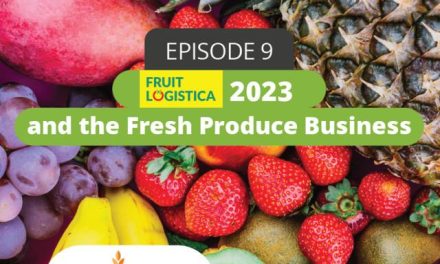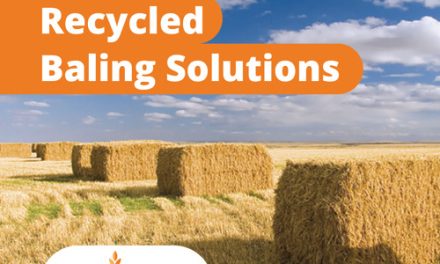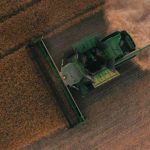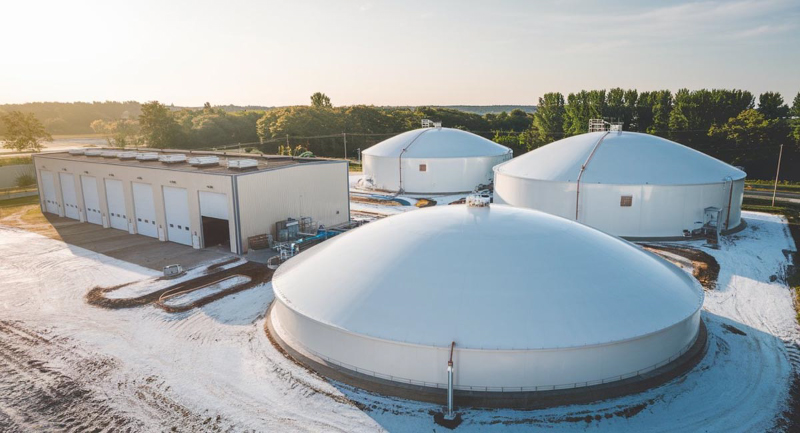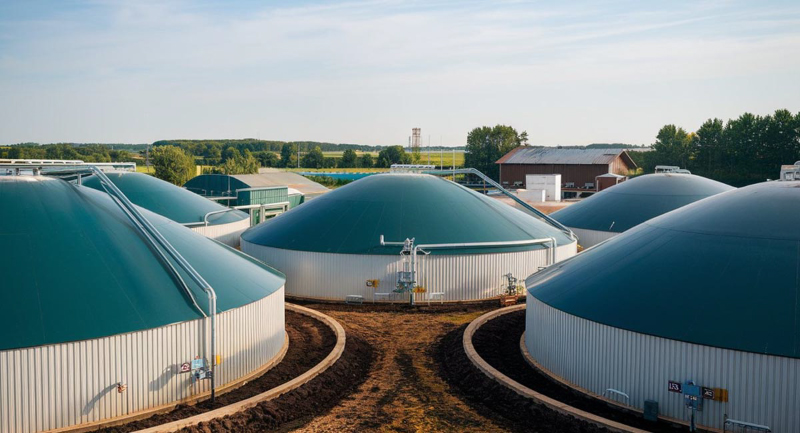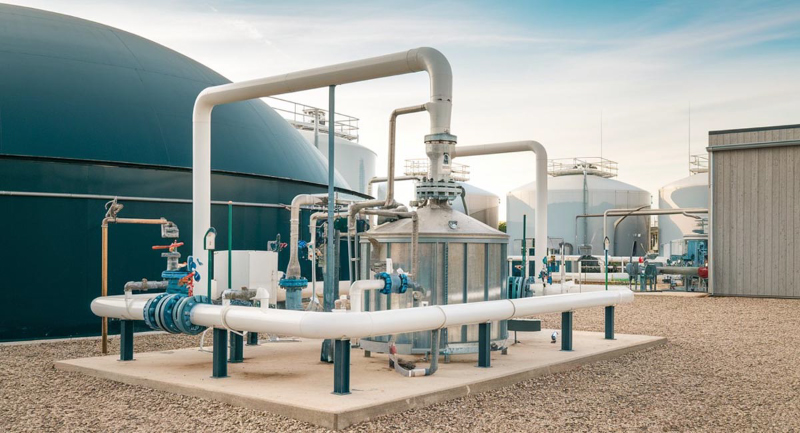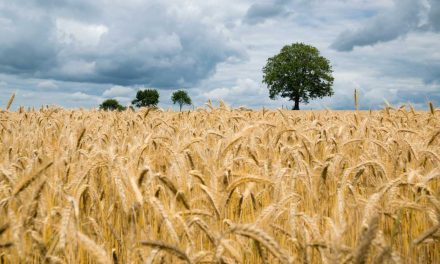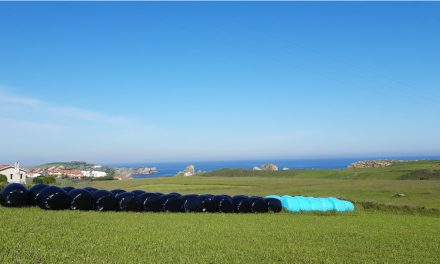
Biogas: A sustainable alternative for the agricultural sector
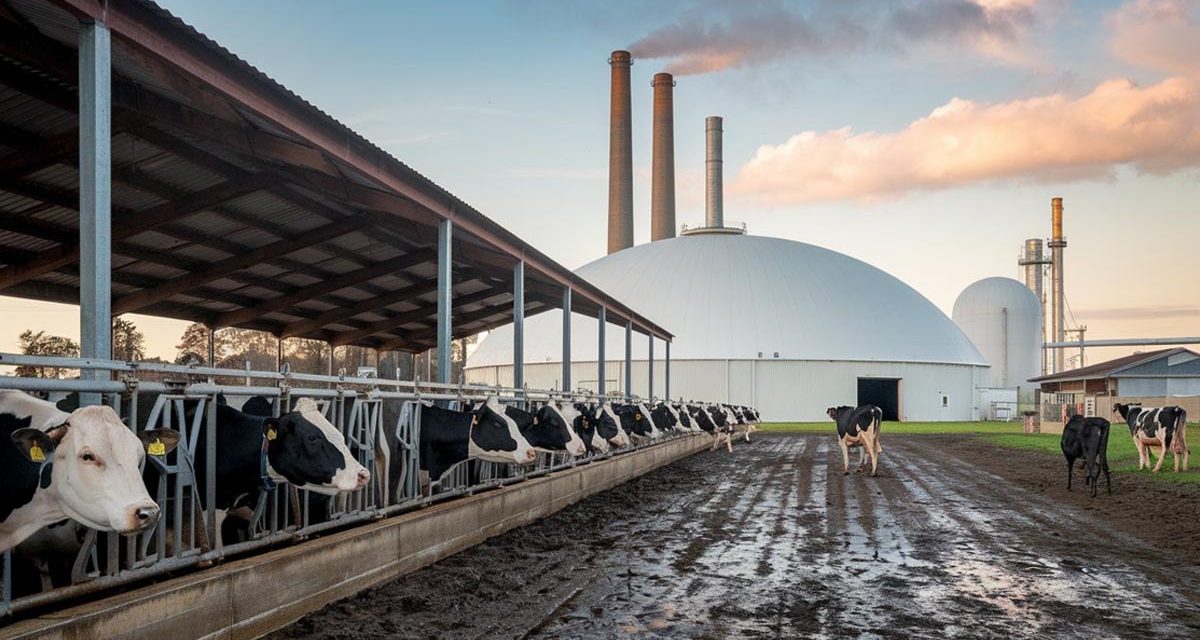
Biogas is an alternative source of renewable and sustainable energy, which is generated by the degradation of organic matter. Biogas is gaining momentum mainly because it can be used for diverse energy purposes, such as electricity, heating, and fuel.
An aspect to note is that sustainability and energy efficiency lead the way into the future of biogas on dairy farms. This is especially important considering that, for example, nearly 10% of U.S. methane emissions come from manure management practices and livestock operations.
In this article, we will learn clearly and simply what biogas is, its production process, its benefits for the environment and the economy, and its advantages for farms and the agricultural sector.
What is biogas?
Biogas is generated by a process of degradation of organic matter in an anaerobic environment, i.e., without oxygen, by the action of microorganisms.
The main composition of biogas is a mixture of methane (CH4) and carbon dioxide (CO2), to which other gases are added to a lesser extent.
Biogas is considered a viable and sustainable option to substitute fossil fuels, due to its capacity to produce energy. The calorific value of biogas varies between 18.8 and 23.4 megajoules per cubic meter, which makes it an interesting and sustainable option.
Biogas production not only helps in terms of waste management but also supports climate change mitigation by reducing greenhouse gas emissions.
It can also provide a natural fertilizer, known as biol, obtained from the biodigestion process, which improves soil quality.
Organic matter used
The organic matter used to produce biogas can come from a variety of sources. These include agricultural waste, food waste, livestock manure, and sewage sludge.
These materials are ideal for the anaerobic digestion process, as they contain high levels of biomass that can be transformed into energy.
The combination of various types of organic matter optimizes biogas production, improving the yield and quality of the gas generated. This synergy makes the best use of available resources, which at the same time contributes to more efficient waste management.
How is biogas produced: Biodigesters and phases of anaerobic digestion?
There are different biogas production facilities, known as biodigesters, which vary in size and capacity. They range from small family biodigesters, which allow farmers to produce biogas for domestic use, to large industrial plants that process significant quantities of organic waste.
These facilities are key to harnessing the full benefits of biogas, transforming waste into a clean, renewable energy source.
Biodigesters generate an anaerobic environment, where certain types of bacteria decompose organic matter in several phases, thus producing biogas that can be used as an energy source.
Stages of anaerobic digestion
Anaerobic digestion is divided into several stages, each having a crucial role in biogas production. These stages are the following:
- Hydrolysis: During hydrolysis, hydrolytic microorganisms use enzymes to break down complex organic compounds, such as lipids, proteins, and carbohydrates. This process converts or transforms these compounds into simpler, more soluble molecules, which are needed for subsequent stages of anaerobic digestion.
- Acidogenesis: In the acidogenesis phase, the products obtained from hydrolysis are converted into organic acids and other intermediate compounds. This process is carried out by acidogenic bacteria that transform sugars and amino acids into volatile acids, such as acetic acid.
- Acetogenesis: In this phase or stage the compounds that were not metabolized in the previous phase are converted into acetate, carbon dioxide, and hydrogen, which are essential products for the following phase called methanogenesis, where methane is generated.
- Methanogenesis: This is the final stage of the anaerobic digestion process. In this phase, methanogenic bacteria transform the products of the previous stages into methane and other gases, thus completing the anaerobic decomposition and generating biogas.
Advantages of biogas
Biogas has numerous advantages that can be categorized as economic, environmental, and social, thus contributing to sustainable development in the agricultural sector.
Economic advantages
One of the main advantages of biogas is its potential to generate significant savings in operating costs.
- Reduced energy costs: Farms can use the electricity generated for their consumption, which reduces external energy costs.
- Income generation: If there’s a surplus of energy, it is possible to sell it to the electric network company, creating an additional source of income.
- Improving the value of manure: The digestate resulting from biogas is a high-quality organic fertilizer, which can replace chemical fertilizers, allowing savings in the purchase of these products.
Environmental advantages
From an environmental perspective, biogas plays a key role in waste management and in reducing pollutant emissions. Its production and use contribute greatly to sustainability.
- Efficient slurry management: Treatment of livestock waste by anaerobic digestion reduces the risk of soil and water contamination, complying with current environmental regulations.
- Contribution to the circular economy: The use of waste to produce energy and fertilizers supports a circular economy model, where resources are reused by optimizing their use.
Social advantages
The social advantages of biogas focus on the positive impact it has on rural communities. Encouraging the use of this renewable energy can bring multiple social benefits.
- Job creation: The development of biogas plants can generate new jobs in rural areas.
- Education and training: Implementing biogas technologies requires specific knowledge, so training programs for farmers and their employees are encouraged.
- Boosting local economies: By fostering energy independence, farms become more resilient and can contribute more actively to their local economy.
Biogas production in livestock farms
Biogas production on dairy farms is based on the use of waste generated by livestock through the use of biogas plants.
These wastes are sources of organic matter that can be transformed into renewable energy, hence contributing to more sustainable farm management.
Manure and slurry as raw materials
Manure and slurry are the main inputs for biogas plants on livestock farms. Their use not only minimizes the waste generated by livestock but also makes it possible to take advantage of their energetic properties.
Cow manure, for example, is an excellent source of organic matter for biogas production due to its high nutrient content. Liquid slurry, on the other hand, facilitates the anaerobic digestion process, as it has a high water content and is rich in nutrients and minerals.
Biogas production capacities on cattle farms
Biogas production capacities on cattle farms are highly dependent on the number of cattle and the type of waste managed.
On average, a cow generates about 18 tons of manure per year. This volume, multiplied by the number of animals, results in a significant amount of biogas.
For example, it is estimated that a farm with 800 head of cattle can generate up to 2.05 GWh of electricity per year. This is enough to supply approximately 500 households, so this figure indicates the high energy potential of these farms.
Use of biogas on the farm
Some of the uses and benefits of biogas generation on dairy farms are as follows:
- Self-consumption of electric energy: Allowing to satisfy part of their energy needs autonomously and sustainably. Generating more stable and predictable energy costs and less dependence on external suppliers.
- Reduction of operating costs and reinvestment of savings: This cost reduction allows the reinvestment of savings in improvements and the expansion of the farming activity. This is particularly relevant in a sector where profitability is key.
- Energy supply and additional income: Biogas generation enables dairy farms to sell the surplus energy that they don’t need, thus contributing to the local economy and generating additional income.
Silage and biogas processing
Biogas production is directly related to the silage process. The term “silage” refers to a livestock feed preservation process commonly used in agricultural systems.
It consists of the controlled anaerobic fermentation of forage components such as grass, legumes, or cereals to preserve the quality of nutrients and feed.
In this regard, the importance of oxygen barrier plastics in the silage process should be highlighted, as they help farms to make a more efficient silage process, which is therefore, more sustainable, without generating more waste.
The future of biogas: Technological innovations
Advances in technology are driving the production and use of biogas in ways that had not been considered before. Some of the most relevant innovations include the following:
- Improved digester efficiency: New designs and materials are increasing the efficiency of biodigesters, enabling higher biogas production yields.
- Integration with renewable energies: The combination of biogas with other renewable energy sources is gaining ground. This allows the creation of hybrid systems that optimize energy production.
- Biogas purification processes: The implementation of technologies that allow biogas to be purified into biomethane has opened up new opportunities in the use of gas as a fuel for vehicles and in natural gas networks.
- Digital monitoring and automation: The use of artificial intelligence systems and sensors has enabled more effective process control, improving nutrient management and biogas production.
Government policies and support
The role of governments is essential to encourage the use of biogas through clear and sustainable policies. Some initiatives include:
- Subsidies and financial assistance: Financing programs that facilitate investment in biogas technologies, especially for small and medium-sized companies.
- Regulation of waste management: Regulations that favor the energy recovery of organic waste, encourage the production of biogas.
- Cross-sector collaboration: Incentives for agriculture, the livestock farming industry, and the energy sector to collaborate in biogas projects, strengthening the circular economy.
- Climate targets: Government commitments to meet emission reduction targets, where biogas plays a relevant role in the decarbonization strategy.
Other content of interest related to this topic:
- Maximizing silage yield with microbial inoculants
- How to wrap silage bales
- Webinar on the importance of silage protection
Conclusion: Biogas is a sustainable and timely alternative
As we have seen, biogas is a renewable energy source that has multiple applications and uses, such as electricity generation and heating.
For the livestock farming industry and the agricultural sector in general, it offers several advantages and benefits, thus having enormous potential. However, support and subsidization by states and governments is crucial, due to the high costs of implementation and renovation.
The development of biogas in the coming years and decades as a sustainable renewable energy source will be very important to achieve the goals set by various governments in terms of reducing greenhouse gas emissions.
Sources:
- (May 27, 2021). What is agricultural biogas production? Retrieved from: https://www.agrikomp.com/what-is-agricultural-biogas-production/
- org. (No date available). Special section: Biogas and biomethane. Retrieved from: https://www.iea.org/reports/renewables-2023/special-section-biogas-and-biomethane
- (April 3, 2019). Biogas for energy self-generation in dairy farms [Biogás para la autogeneración energética en granjas lecheras]. Retrieved from: https://rumiantes.com/biogas-autogeneracion-energetica-granjas-lecheras/
- Silostop Agri. (August 31, 2022). Sustainability in the US Dairy Sector. Retrieved from: https://www.silostop.com/blogs/news/sustainability-in-us-dairy-sector
- University of California – CLEAR Center. (April 23, 2020). What is a Dairy Digester and How Does it Affect Methane Emissions? Retrieved from: https://clear.ucdavis.edu/explainers/what-dairy-digester-and-how-does-it-affect-methane-emissions
- com. (August 4, 2020). Net Zero Initiative Is Right Move for Dairy at Right Time. Retrieved from: https://www.usdairy.com/for-farmers/blog/sustainable-farm-net-zero-goal
- gov. (November 2021). U.S. METHANE EMISSIONS REDUCTION ACTION PLAN. Retrieved from: https://www.whitehouse.gov/wp-content/uploads/2021/11/US-Methane-Emissions-Reduction-Action-Plan-1.pdf
- (January 27, 2021). WWF Study: Larger US Dairy Farms Could Achieve Net-Zero Emissions within 5 Years. Retrieved from: https://www.worldwildlife.org/press-releases/wwf-study-larger-us-dairy-farms-could-achieve-net-zero-emissions-within-5-years





![[eBook] Sustainability and water management](https://agriplasticscommunity.com/wp-content/uploads/8_550x310_ENG-440x264.png)
![[eBook Trends in Agriculture Plastics] Increasing use of biodegradable mulch](https://agriplasticscommunity.com/wp-content/uploads/550 × 310_2_ENG-440x264.png)
![[eBook Trends in Agriculture Plastics] Reducing the plastic used in the manufacture of agricultural films](https://agriplasticscommunity.com/wp-content/uploads/550 × 310_1_ENG-150x150.png)





